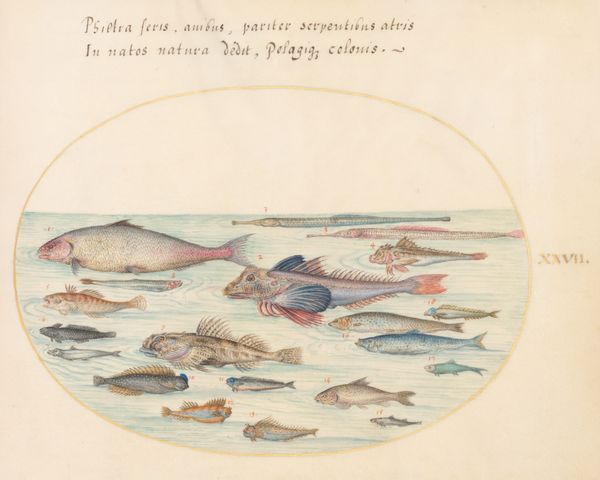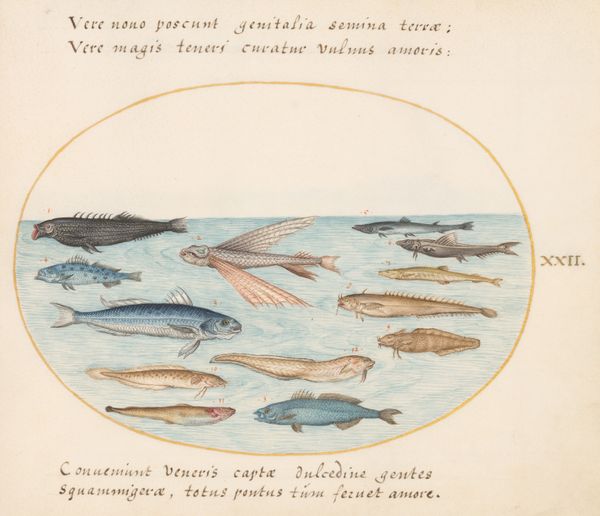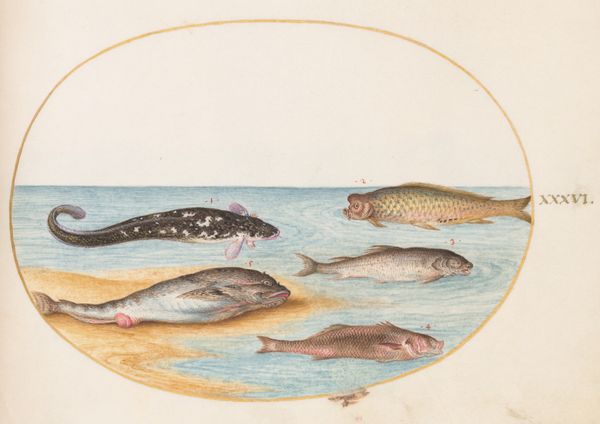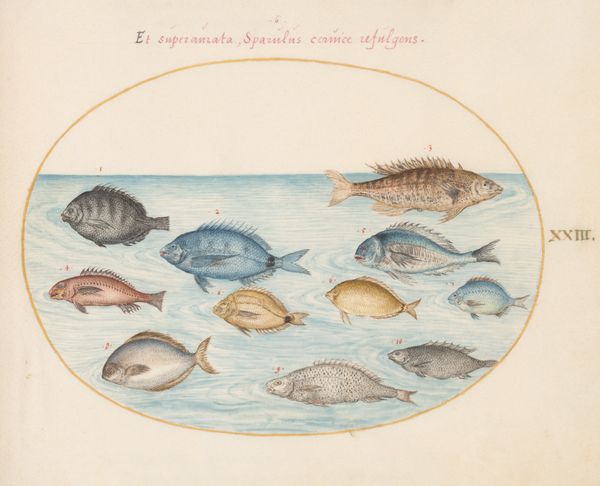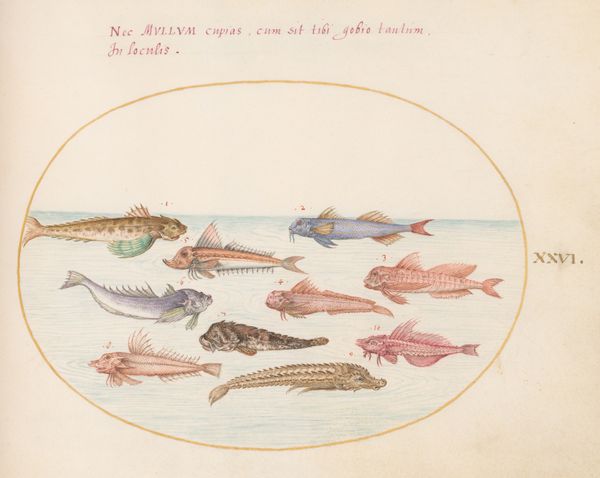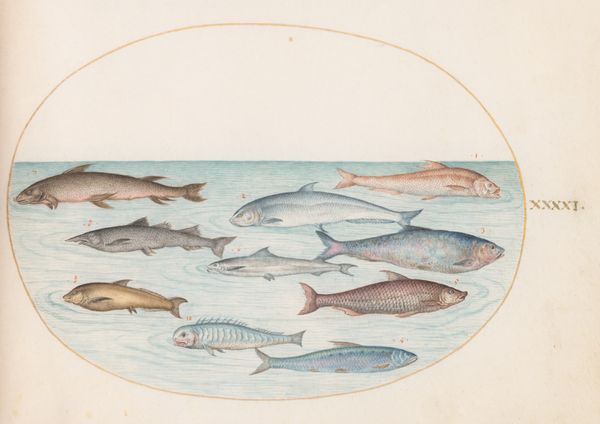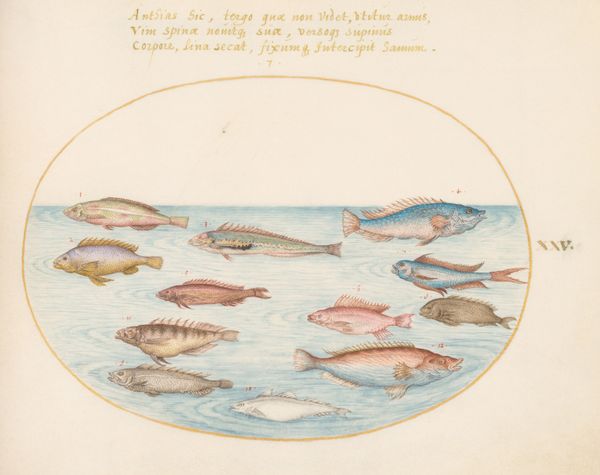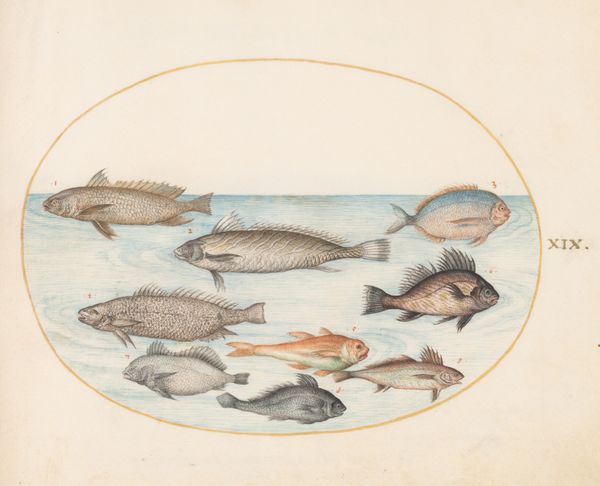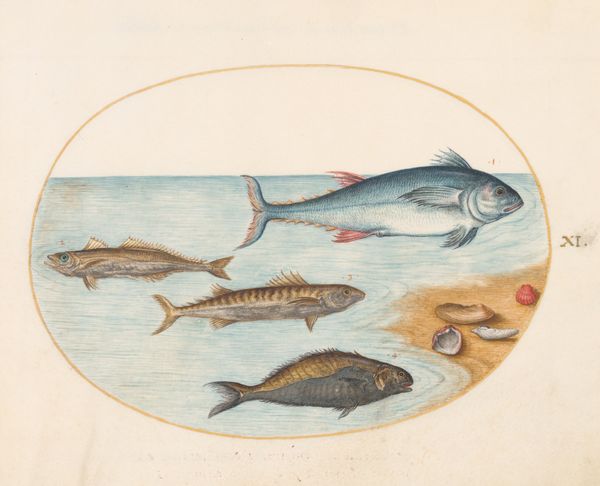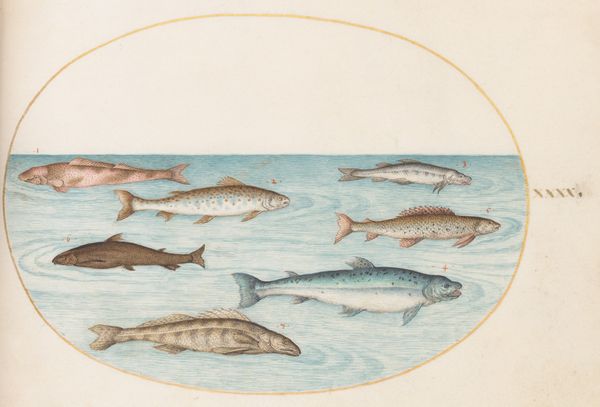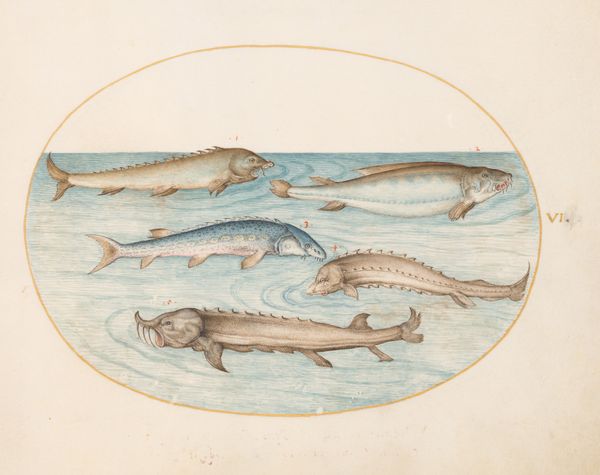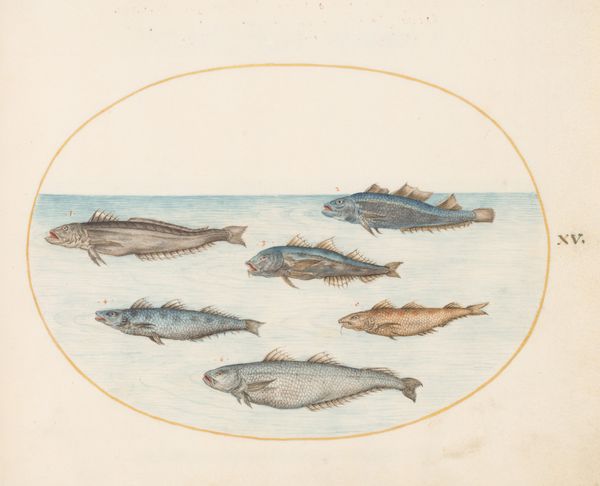
Plate 17: A Cod, Weever Fish, Eels, and Other Fish c. 1575 - 1580
0:00
0:00
drawing, watercolor
#
drawing
#
water colours
#
11_renaissance
#
watercolor
#
coloured pencil
#
history-painting
#
academic-art
Dimensions: page size (approximate): 14.3 x 18.4 cm (5 5/8 x 7 1/4 in.)
Copyright: National Gallery of Art: CC0 1.0
Curator: Welcome to this captivating work, “Plate 17: A Cod, Weever Fish, Eels, and Other Fish,” created around 1575-1580 by Joris Hoefnagel. The artwork showcases a meticulous study of marine life rendered in watercolor. What are your initial thoughts? Editor: It strikes me as a cataloging of dominance, doesn’t it? These creatures are laid bare, almost taxonomized in a way that mirrors the era's colonial impulse to classify and conquer the natural world. Curator: I appreciate that reading. Formally, though, observe how the artist masterfully utilizes the watercolor medium. The gradations of tone, the delicate layering...it’s quite exquisite in capturing the texture of the fish scales and the subtle aquatic environment. The circular composition frames the specimens beautifully. Editor: While the execution is certainly refined, I'm compelled to think about where these fish ended up. Were they specimens for scientific advancement or destined for a nobleman's table? Food and resources were central to social stratification and colonial expansion during this period. This plate hints at power dynamics extending into the natural world. Curator: Interesting! But I also see a genuine scientific curiosity here, a Renaissance fascination with understanding the natural world through direct observation and artistic representation. The accuracy is remarkable. Editor: Yes, the detail can't be ignored. However, "science" was far from apolitical then. This knowledge accrued by explorers was weaponized, impacting both Indigenous communities and environments—perhaps the ocean that was home to these fish. Even the Latin inscription adds a layer of learned authority reinforcing a Eurocentric viewpoint. Curator: True, though that doesn’t diminish the beauty of the application itself, nor its scientific intentions, even as those were formed under constraints and biases we can now address. Editor: Ultimately, this work makes me consider how art and science can, inadvertently or deliberately, advance broader power structures. What looks like mere representation is also imbued with history, ambition, and exploitation. Curator: So while the image serves as a study of Renaissance artistry and scientific interest, it presents as a platform for modern viewers to consider the intertwined aspects of human dominance. Editor: Precisely.
Comments
No comments
Be the first to comment and join the conversation on the ultimate creative platform.
